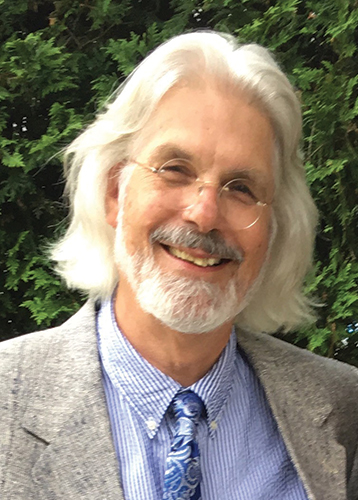James Malenda, ÔÇÖ71, 2025 Professional Achievement Award Recipient
ÔÇťI feel it is because of the instruction, advice and guidance of my enameling professor William Harper that I was accepted into graduate school at SUNY New Paltz and, from there, continued to work as an artist educator. As an educator, I endeavored to support and inspire my students in the same way.ÔÇŁ
James Malenda, ÔÇÖ71, has crafted his life around art, exhibiting his immense talent for metalsmithing and enameling on both a national and international scale. His work, which ranges from jewelry to free-standing and wall mounted sculptures, can be found in museums throughout the world, including locations in Pennsylvania, New York, Texas, Connecticut, England and Norway. His art has also been featured in several international exhibitions in Germany, France and Korea.
James manages to meld a skill and proficiency for traditional art techniques with a flair for innovation. He first encountered enameling while studying at ┬ÚÂ╣╣űÂ│, which is also where he honed his distinctive approach to the artform. His work often uses a variety of metals and vitreous enamels on a scale rarely seen in sculptural work, transcending categories in his exploration of subject matter. JamesÔÇÖ dedication to his craft even led him to create new techniques, including ÔÇťchampave,ÔÇŁ a method in which stones are set using vitreous enamel rather than traditional prongs or bezels. If his exceptional work doesnÔÇÖt speak for itself, the many grants and awards he has received over the past 50 years certainly do.
ÔÇťThe most distinctive characteristic in his work is the size and scale of the enameling elements,ÔÇŁ said Ruth Malenda, who nominated James for this award. ÔÇťMost contemporary American enamelists work either flat or on very petite traditional hollowware forms, which generally fit in kilns ranging from ÔÇťtrinketÔÇŁ kilns to medium-sized kilns averaging 8ÔÇŁ x9ÔÇŁ x 5ÔÇŁ. Malenda fabricates and enamels three-dimensional copper forms which must be fired in a ceramics kiln that is 32ÔÇŁ in diameter by 18ÔÇŁ high.ÔÇŁ
Throughout his 40-year career as a college educator, James has shared his love of metalworking and enameling with several generations of students, many of whom went on to become practicing artists and teachers themselves. He taught at Kutztown University in Kutztown, Pennsylvania, as a professor of metalsmithing and enameling. Shortly after retiring from that position he was teaching again, this time in Certaldo, Italy, on behalf of East Carolina UniversityÔÇÖs Intensives Program.
Even after retiring from a formal role in education, James continues to bring the joy of making to others. He has led numerous workshops and lectured throughout the United States and abroad in locations such as Haystack Mountain School of Crafts, Deer Isle, Maine; Arrowmont School of Crafts, Gatlinburg, Tennessee; Penland School of Craft, Bakersville, North Carolina; China; Ecuador; and Germany. James is a past member of the Enamelist Society and the Board of Peters Valley School of Craft. He is currently a member of the Tioga Arts Council. He has even opened his studio to the community as part of Artist Open House Weekend to share his work with the general public.
ÔÇťJames is one of those artists for whom working in the studio is as necessary as breathing,ÔÇŁ Ruth explained. ÔÇťIn a similar way, he feels compelled to share the experience of ÔÇśmakingÔÇÖ with people of all levels of expertise. For him, this is an intimate process which must be person-to-person in venues both formal and informal.ÔÇŁ
As a first-generation college graduate, James is a remarkable example of the impact and value a state system of higher education can have. He continued his education, earning a Master of Fine Arts from SUNY NewPlatz in 1975. Since then, James has gained international acclaim for his innovative work, and it all began with his first enameling class at ┬ÚÂ╣╣űÂ│ nearly six decades ago.
ÔÇťI feel it is because of the instruction, advice and guidance of my enameling professor William Harper, who is renowned in the field of vitreous enameling throughout the world, that I was then accepted into graduate school at SUNY New Paltz and, from there, continued to work as an artist educator. As an educator, I endeavored to support and inspire my students in the same way.ÔÇŁ
To view James' work, please .

